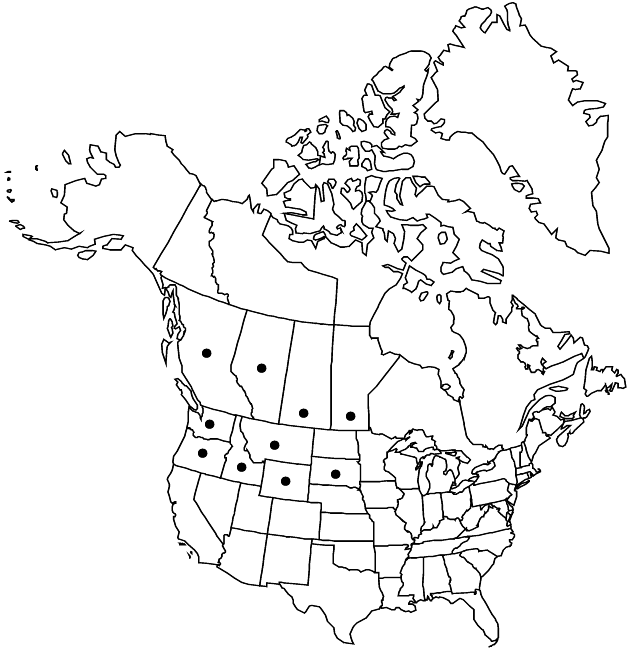Eurybia conspicua
Phytologia 77: 259. 1995.
Plants 30–100 cm; forming loose clones, short-stipitate-glandular; rhizomes long to short, woody. Stems 1, erect, seldom branched proximally, stout, proximally glabrate to villous and sparsely glandular (sometimes to base), distally glabrate, strongly glandular. Leaves cauline, thick, ample, bases clasping, margins ± revolute, sharply serrate (rarely subentire) with ± mucronate teeth, veins prominent, apices acute to acuminate, mucronate, faces scabrous, adaxial veins villous; proximal cauline deciduous by flowering, winged-subpetiolate to sessile, blades oblanceolate to ovate or obovate, smaller than mid, bases tapering; mid usually sessile, sometimes subsessile, obovate or elliptic, (40–) 58–140 (–180) × (8–) 20–50 (–80) mm, bases cuneate to mostly rounded-subauriculate; distal (in arrays) sessile, ovate to oblanceolate, lanceolate, or elliptic, (8–) 10–60 (–90) × 2–28 (–40) mm, strongly reduced distally. Heads 5–50 in open corymbiform arrays. Peduncles sometimes sparsely hairy, stipitate-glandular; bracts usually 0, sometimes 1–3. Involucres campanulate, 9–12 mm, shorter than pappi. Phyllaries 34–55 in 4–5 series, midnerves translucent, strongly unequal, membranous, bases indurate, dark green distally, margins densely ciliate, apices spreading or ± squarrose, purple (mucro), acute or acuminate (sometimes mucronate), faces glabrous, densely stipitate-glandular; outer ovate or lanceolate; inner oblong-lanceolate, margins hyaline, often purplish distally, scarious. Ray-florets 12–35; corollas blue or violet, (8–) 10–15 × 1.2–2 mm. Disc-florets 48–55; corollas yellow, 9–10 mm, slightly ampliate, tubes narrowly cylindric, slightly longer than narrowly funnelform throats, lobes erect, lanceolate, 0.7–1.3 mm. Cypselae tan, fusiform, ± compressed, 3–4 mm, ribs 8–10, appressed-setose; pappi of cinnamon to pinkish bristles 9–10 mm, about as long as disc corollas. 2n = ca. 108, ca. 122.
Phenology: Flowering summer–fall.
Habitat: Open, mesic conifer (spruce-fir, pine, or aspen-conifer) or aspen woods, from foothills to upper montane zone, mesic to dry meadows, forest openings, in somewhat clayey soils, adapted to spring fires
Elevation: 300–2500 m
Distribution

Alta., B.C., Man., Sask., Idaho, Mont., Oreg., S.Dak., Wash., Wyo.
Discussion
Eurybia conspicua is a western boreo-montane taxon; it ranges from the Interior Mountains and Plateaus to the Rocky Mountains, and spreads onto the northern Great Plains in the aspen parklands-southern boreal forests of Canada, barely into western Manitoba. It is disjunct to the Black Hills (South Dakota) and Cypress Hills (Alberta-Saskatchewan). It stops at the Canadian Shield due to soil preferences (A. J. Breitung 1988). This taxon has the highest chromosome number in the genus.
Selected References
None.
Lower Taxa
"[" is not declared as a valid unit of measurement for this property."]" is not declared as a valid unit of measurement for this property."thick" is not a number.